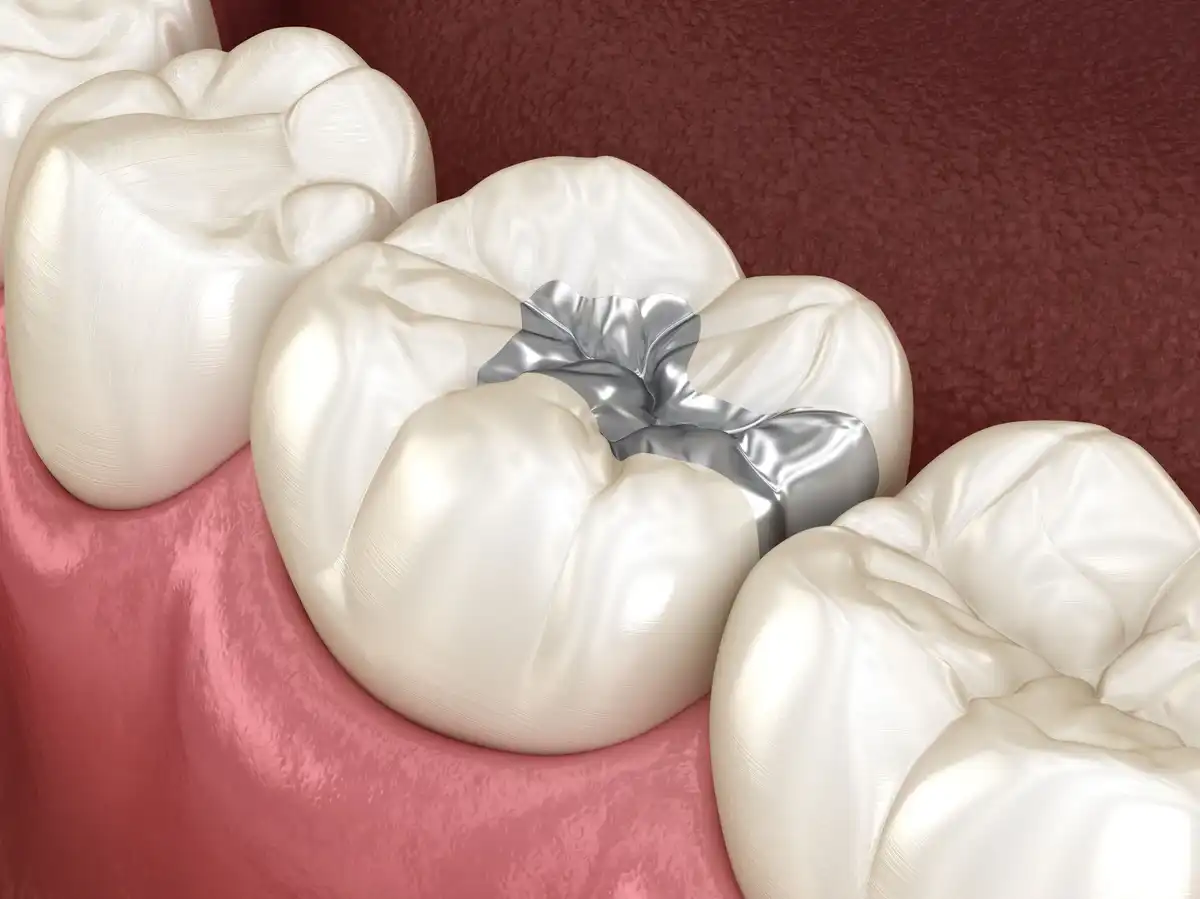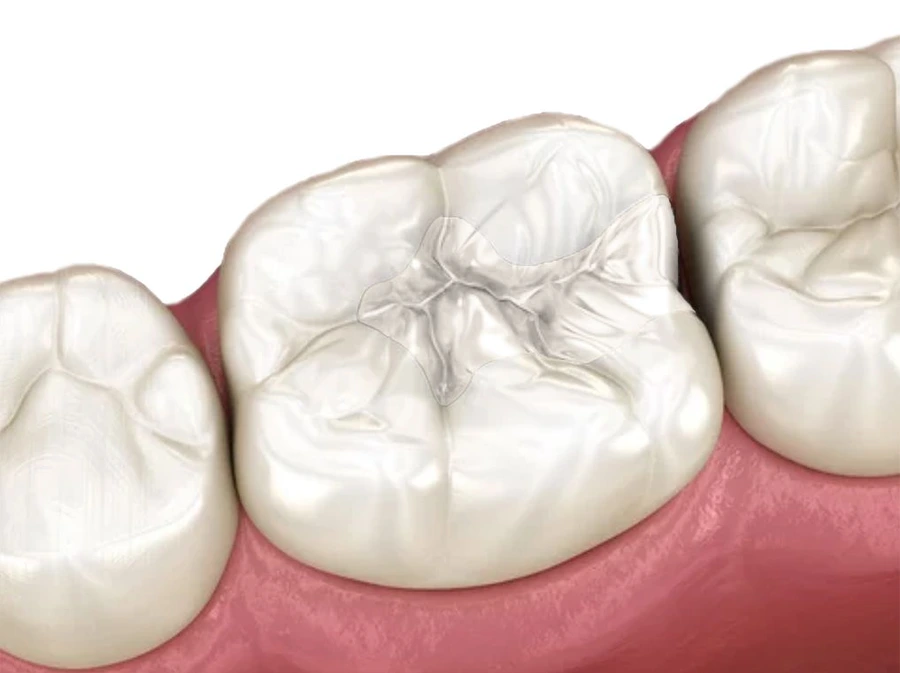The Truth About Silver Fillings | Risks & Side Effects


Dental fillings help stop the spread of decay and repair your tooth, so that you can eat normally without any discomfort. There are two major types of dental fillings: Dental Amalgam (silver) and Composite (white.) Traditional silver fillings are known for containing an alloy (mixture) of metals, including mercury. As such, a lot of people seek to remove amalgam fillings since mercury is physically harmful in large amounts. But are silver fillings “bad for you”, per se? If so, why do dentists keep using them to repair teeth?
Are Silver Fillings Safe?
If the effects of mercury are harmful, why is it used inside of silver fillings? Dental amalgam fillings have been used for decades. And even according to the FDA, removing amalgam fillings isn’t always advised. The risk of possible mercury exposure is extremely low and tends to be highest when you’re physically placing or removing amalgam fillings, because of the vapors that are created during the process. While there could potentially be a risk of mercury vapor release whenever you’re chewing or grinding your teeth together, it’s extremely low.
Why Do Dentists Even Use Mercury in Fillings?
Mercury Exposure Side Effects
Let’s just say you were exposed to elemental mercury out in the environment (NOT in dental fillings.) What would the side-effects be? According to the EPA and how much mercury vapor you were exposed to, you would potentially be at risk of:
- Loss of peripheral vision
- Impaired speech, hearing
- Inability to walk correctly
- Loss of muscle coordination
- Problems with memory and cognition
- Tremors
- Insomnia
- Neurological complications
- Mood disorders
- Headaches
Should Dental Amalgam Fillings Be Removed?
Now, there are some scenarios where you’ll want to consider getting your dental amalgam fillings removed. For instance, if you have known neurological conditions, kidney problems, or know the filling is outdated and you’re planning to get pregnant or breastfeed, it could be best to have your restoration changed out with one that doesn’t contain mercury. You’ll want to address this on a case-by-case basis and discuss it personally with your dentist, as everyone’s circumstances are unique.
Removing Amalgam Fillings Side Effects
We also know that mercury vapor tends to be highest during the dental amalgam removal process. When silver fillings are physically removed, they release more mercury at that point in time than they do during everyday chewing. If exposure is a concern, you’ll want to weigh the pros and cons of when it’s best to go ahead and have your filling removed. Your dentist may advise against it if your restoration still has plenty of years of use left in it.
Who Should Be Concerned?
What conditions make someone more at-risk for elemental mercury side-effects from silver fillings, if any? According to the FDA, the only known populations who need to possibly take extra precautions with mercury exposure include the following:
Pregnant Women
Nursing Mothers
There are few, limited research studies that suggest breastfeeding women showed a spike in mercury levels in breastmilk when they had silver fillings placed. Ideally, you would want to wait to place the filling until after you’ve weaned, but since tooth decay can spread easily it’s best to just go ahead and place a white filling if you have concerns about potential exposure. Another option is to pump and discard your breastmilk after having a silver filling placed.
Children Under Age 6
We know that a child’s developing neurological system is very susceptible at a young age. If there are environmental contaminants during early childhood, they can be potentially detrimental to your child’s future physical and cognitive abilities. While the risk of mercury exposure during dental filling placement is low, heavy restorative cases involving silver fillings in multiple teeth could pose a slightly higher risk than some parents are comfortable with. You may want to discuss your options with your child’s pediatric or family dentist.
People With Mercury Sensitivities or Allergies
Silver fillings don’t just have mercury in them; they also contain an alloy of various metals like copper and tin, among others. Since some people are extremely sensitive to certain metals (perhaps their skin breaks out if they wear certain types of jewelry) there is a risk for tissue sensitivity or oral ulcers after a silver filling is placed. These side-effects are extremely rare but should be discussed in people with known severe allergies.
Known Neurological or Kidney Problems
Mercury exposure can potentially further elevate complications in people with neurological conditions or who have limited kidney function. Since mercury tends to be found more in certain tissues than others—including the brain and kidneys—individuals who already have problems with those organs should be particularly cautious of placing new silver fillings if they are diagnosed with tooth decay.
An Old Damaged Amalgam Filling
If you have old silver fillings that are starting to leak, pull away from your tooth, or are cracked, there is a higher potential risk of mercury exposure than not. Regardless of whether you have white or silver fillings, all damaged dental fillings need to be replaced at your earliest convenience. Otherwise, you simply run the risk of your tooth cracking apart around it, then requiring a crown or even a root canal.
Most large silver fillings—once they’re replaced—are upgraded to a full ceramic crown. Since additional tooth structure needs to be prepped after a filling is removed, large dental amalgam restorations may leave little tooth left to work with.
Alternatives To Dental Amalgam Fillings
The best alternative to a silver filling is a white composite filling. These types of fillings are completely free of elemental mercury and more attractive since they blend in with your tooth. Your dentist can select the exact color so that it matches the tooth around it. That way you can fill any area without someone seeing silver when you smile. As a bonus, composite resin is also less invasive to your teeth. Instead of having to be wedged into your tooth enamel, it bonds to it directly. This structural characteristic means white fillings are smaller than metal ones, helping you preserve as much healthy tooth structure as possible. But if your tooth has a cavity that’s too large to fill, a ceramic crown will also work.

Silver Fillings Recap
If you have silver fillings, you don’t have to freak out. Yes, as a chemical in the environment, the effects of mercury are harmful. But when it’s combined with other metals as an alloy it can be extremely safe for repairing damaged teeth. It’s generally not recommended to have your amalgam fillings removed unless they’re starting to wear out or leak. More attractive and less-invasive materials are making silver fillings less common, but they still have a place in today’s dental offices. As a general rule, the FDA only recommends that you decline silver fillings if you’re in an at-risk population or have known neurological or allergy concerns.

Make your inbox smile!
Subscribe






